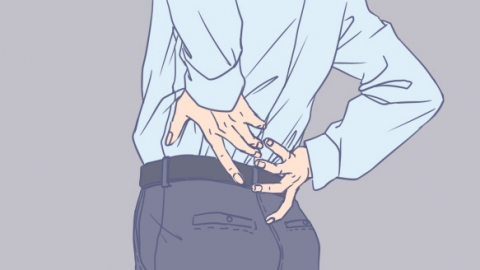What symptoms occur in lumbosacral radiculopathy?
Generally, lumbosacral radiculopathy is a condition caused by compression or injury of the nerve roots in the lumbosacral region. Common symptoms include pain in the lower back and sacral area, radiating pain in the lower limbs, sensory disturbances in the lower limbs, weakened muscle strength in the lower limbs, and abnormalities in urination or defecation. A detailed analysis is as follows:

1. Lumbosacral Pain: Patients often experience persistent dull or aching pain in the lower back and sacral region. The pain typically worsens after prolonged sitting, standing, bending during labor, or lifting heavy objects, and may be partially relieved by lying flat to rest. Sometimes the pain is accompanied by stiffness in the lumbosacral area, which tends to be more pronounced upon waking in the morning.
2. Radiating Pain in the Lower Limbs: Pain radiates from the lumbosacral region through the buttocks and down the posterior or lateral thigh to the calf and foot, manifesting as sharp, throbbing, or electric-shock-like pain. Increased intra-abdominal pressure—such as during coughing, sneezing, or straining during bowel movements—can intensify the pain, which in severe cases may impair walking ability.
3. Sensory Abnormalities in the Lower Limbs: Affected areas of the lower limbs may experience numbness, burning sensations, tingling (like ants crawling), or reduced sensitivity to touch and temperature. For example, patients may report numbness in the feet, a sensation of walking on cotton, or diminished response to hot or cold stimuli on the outer side of the calf.
4. Decreased Muscle Strength in the Lower Limbs: Prolonged nerve root compression can lead to weakness in muscles innervated by the affected nerves, such as difficulty with dorsiflexion or plantar flexion of the ankle. This may present as trouble standing on tiptoes or lifting the toes, causing the toes to drag while walking. In severe cases, foot drop may occur, where the patient is unable to lift the front part of the foot, significantly affecting gait stability.
5. Urinary and Bowel Dysfunction: In severe cases, when nerve root compression affects the nerves controlling bladder and bowel function, patients may experience difficulty urinating, weak urine stream, incomplete voiding, constipation, or loss of bowel control.
It is recommended that patients avoid maintaining the same posture for long periods, minimize loading on the lumbosacral region, use a mattress of moderate firmness, and perform appropriate exercises to strengthen the back and core muscles—such as the "flying swallow" or "five-point support" exercises—to improve lumbosacral stability and alleviate symptoms.




